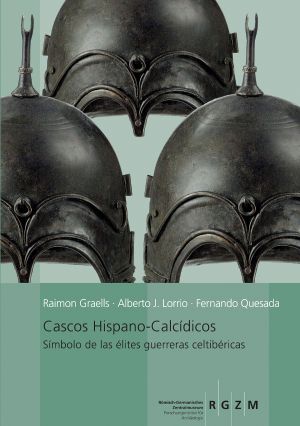
How to Cite
License

This work is licensed under a Creative Commons Attribution-ShareAlike 4.0 International License.
Published
Downloads
Cascos hispano-calcídicos
Símbolo de las elites guerreras celtibéricas
The Hispano- Chalcidian helmet is a fully Hispanic type, datable to between the 4th and 2nd century BC and with a mainly Celtiberian concentration. However, this type has recently been identified following the looting and sale of a number of specimens, probably from Aranda de Moncayo. The name is explained by its shape, which is reminiscent of Chalcidian helmets and their Italic derivatives, but which takes important morpho-technological details from local Celtiberian production.
Although there is considerable variability among the 32 specimens identified so far, we can consider this to be the result of individualized production. But apart from these variations, the Hispano- Chalcidian group has an easily recognizable predetermined design: a shell with openings for the ears, long muzzle-guard, articulated cheeks (the rim of these pieces is reinforced by riveting a pseudo-hemispherical ribbon), the attachment of ribbons on the front and the systematic application of a complex decorative structure formed by feathers inserted in lateral appliqués and by the vertical lophos, supported between the fork of the cylindrical appendage which is documented to be fixed by three rivets on the upper part of the shell and the rings on the front and dorsal part of the shell.
The study presented here analyses the morphological and decorative characteristics in order to approach their production and the meaning of the weapons themselves: protective elements and, at the same time, vehicles with which to express different messages of power, military rank or influences acquired during the course of mercenary activity in southern Italy.






